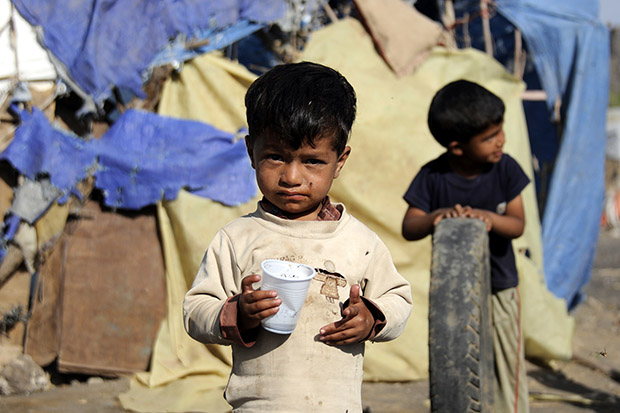Famine Explained: Definition, causes and facts
Samira Abdi fixes her eyes on her son as a nurse weighs him in a weighing basin at a nutrition center in the Melkadida refugee camp in Ethiopia. All five of her children were diagnosed with malnutrition after suffering weeks of stomach pain. They were immediately put on a treatment regime that included a high-nutrient supplement and treatment for related infections, but only three of her children have recovered. Like Samira’s children, approximately 6.6 million children across Ethiopia, Kenya and Somalia are at risk of suffering from acute malnutrition.
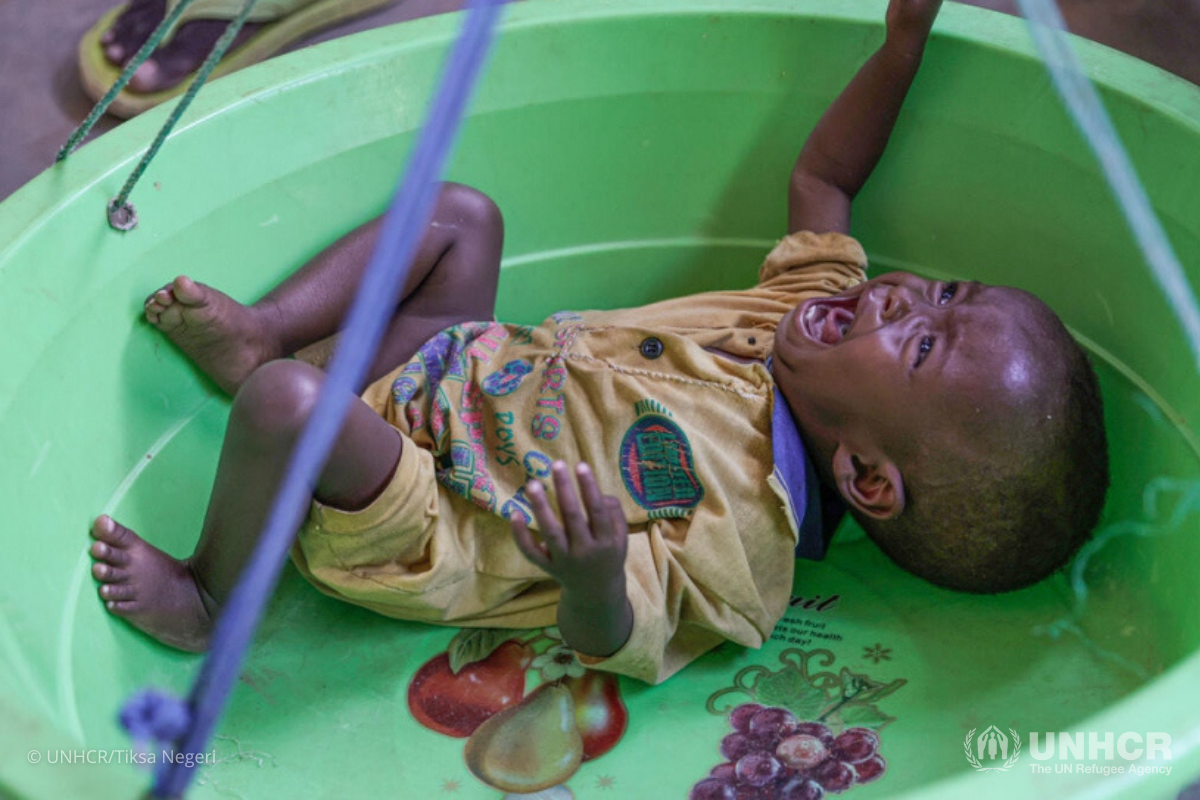
In a world where we produce enough food to feed everyone, up to 828 million people—more than 10 percent of the world's population—still go to bed hungry each night. In 2022, there were 45 million people at the ‘Emergency’ phase of food insecurity, just one step away from a declaration of famine. In Afghanistan, 22.8 million people (55 percent of the population) are suffering from acute food insecurity and the country’s needs are surpassing those of other worst-hit countries, including Ethiopia, South Sudan, Somalia and even Yemen.
But what is famine and how can we stop it?
Here’s What You Need to Know:
1. What is famine?
2. What are the main causes of famine?
3. Which countries are on the brink of famine?
4. Who is most at risk when a famine strikes?
5. What is UNHCR doing to help?
What is famine?
Famine is a situation in which a substantial proportion of the population of a country or region are unable to access adequate food, resulting in widespread acute malnutrition and loss of life by starvation and disease.
While many countries worldwide face food security crises, famine is only declared when certain conditions are met. The United Nations uses a five-phase scale known as the Integrated Food Security Phase Classification (IPC) to assess a country’s food security situation. A famine classification is the highest on the IPC scale (Phase 5) and occurs when at least 20 percent of the population face extreme food shortages, acute malnutrition rates exceed 30 percent – meaning that people experience the most extreme and visible form of undernutrition – and two out of 1,000 people die from starvation on a daily basis.
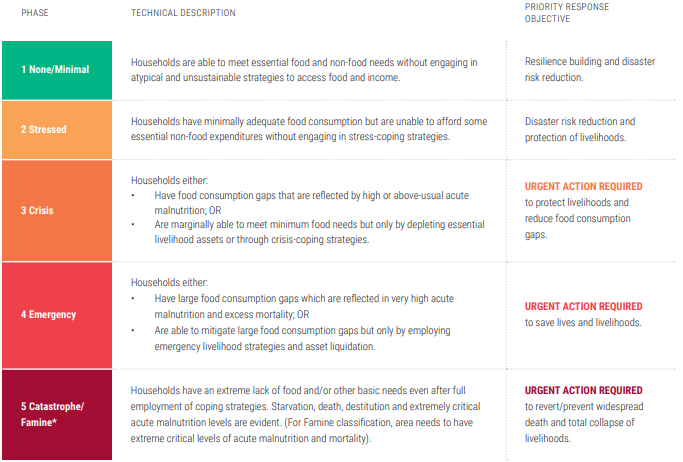
What are the main causes of famine?
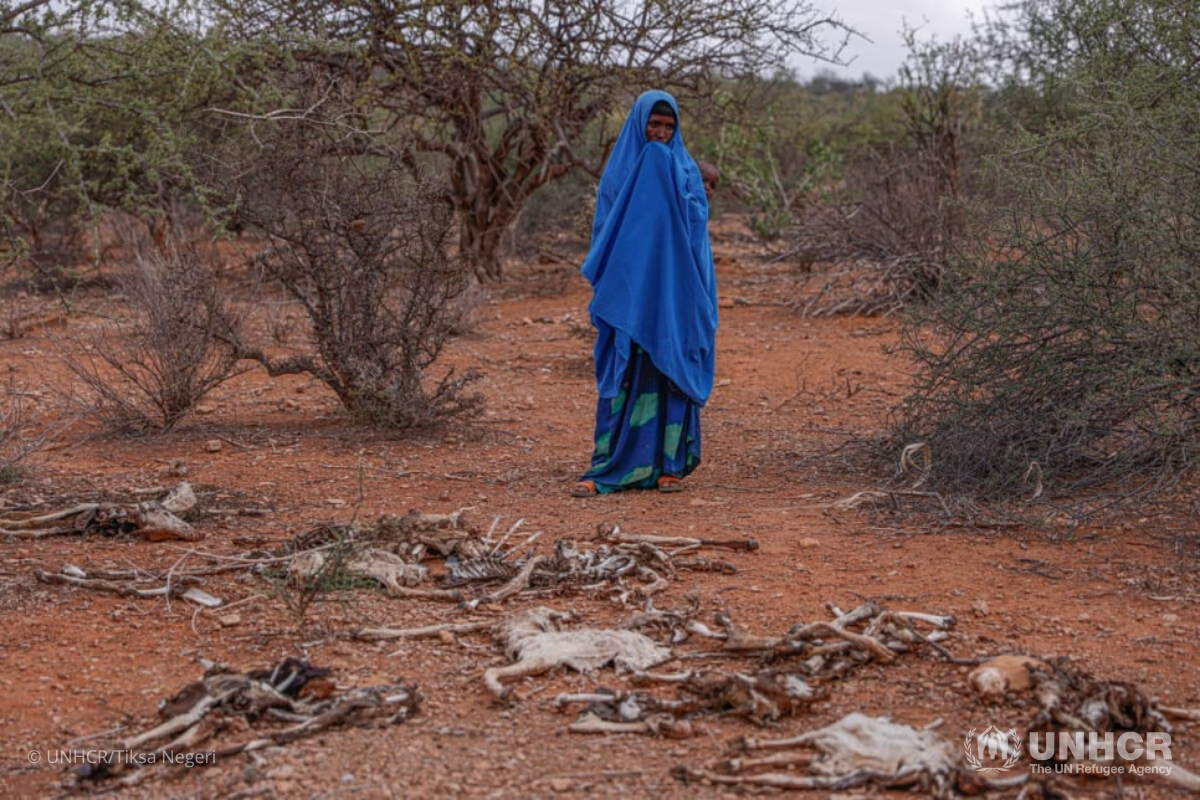
Famine can stem from a combination of multiple factors, such as conflict, displacement, chronic poverty, food insecurity, natural disasters and climate change.
Wars and conflict are usually the primary drivers of famine as they lead to forced displacement, disrupt people’s traditional ways of accessing food and income, hinder humanitarian access and push economies into a long-term decline. Natural disasters - such as droughts, flooding and cyclones - and the effects of climate change can also lead to famine, jeopardizing agriculture and livestock activities in regions where the majority of the population live off the land.
Which countries are on the brink of famine?
Food insecurity is soaring across 20 hunger hotspots where conflict, economic shocks, natural hazards and limited humanitarian access are putting millions of lives at risk, according to a new UN report. Afghanistan, Ethiopia, Nigeria, South Sudan, Somalia and Yemen are hotspots of highest concern as they all have populations facing or projected to face starvation or at risk of deterioration towards catastrophic conditions. They require the most urgent attention.
Deep economic crisis, an unprecedented three-year consecutive drought, and high food and fuel prices are driving extremely high levels of food insecurity in Afghanistan. Forty-five percent of Afghanistan’s population are facing Crisis or worse levels of acute food insecurity (Phase 3 and above), including nearly 6 million people facing Emergency level food insecurity (Phase 4).
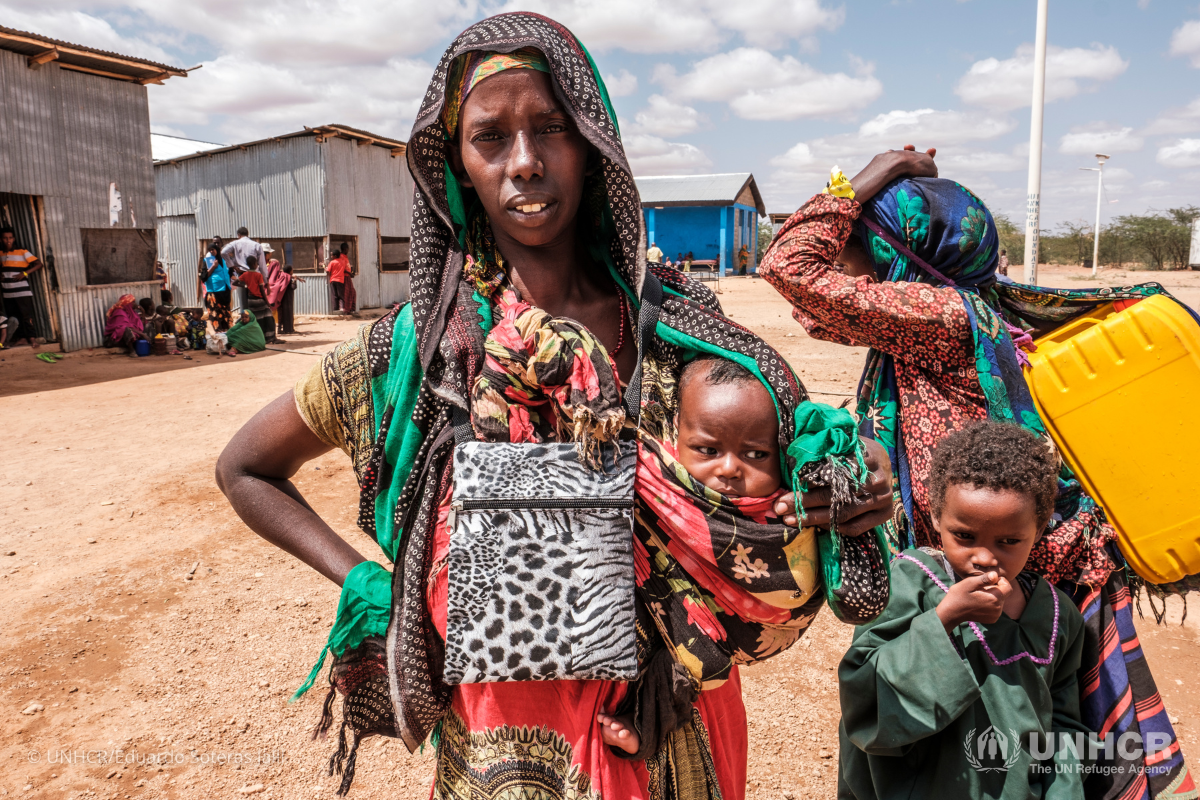
The long-term impacts of COVID-19, climate change, protracted conflict and the war in Ukraine, are contributing to a hunger crisis in the Horn of Africa, particularly in Ethiopia, Somalia and Kenya where 23 million people are highly food insecure and face severe hunger and water shortages. Ethiopia and Somalia are hotspots of highest concern—countries where ongoing conflict and an unprecedented six-year drought (the longest in over 40 years) are among the main drivers of acute food insecurity. More than 13 million people in northern Ethiopia are food insecure while 2.2 million people in Somalia face Emergency level food insecurity, and at least 300,000 face Catastrophe (Phase 5).
Four consecutive years of flooding in South Sudan have wreaked havoc on its population projected to face starvation (Phase 5), as most are located in flood-prone areas. The persistent threat of flooding, conflict and intercommunal violence are expected to keep food insecurity in South Sudan at extreme levels. Almost two-thirds of the population are facing Crisis or worse levels of acute food insecurity (Phase 3 and above).
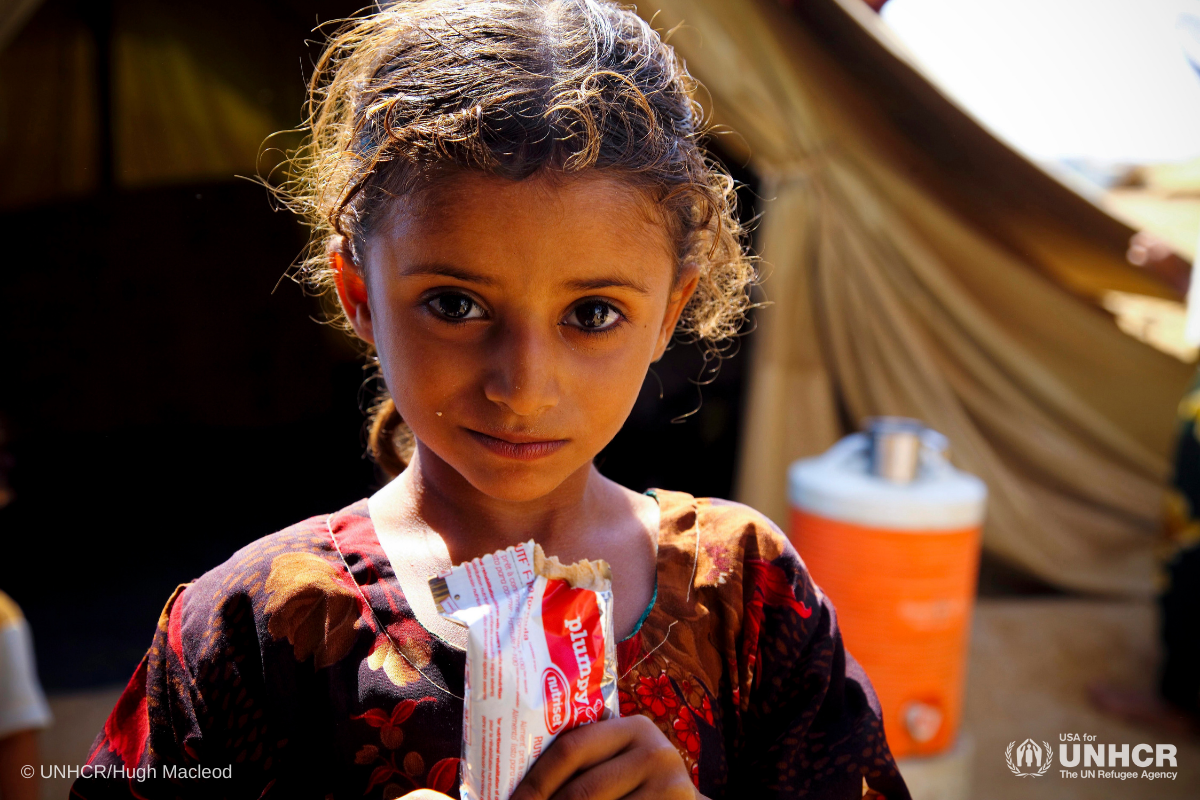
Yemen remains a country of highest concern as it approaches nearly a decade of war. Although the food security outlook in Yemen is less grim than previously projected, acute food insecurity remains at critical levels. At least 19 million people in Yemen suffer from acute food insecurity, including 2.25 million children under the age of five.
The Democratic Republic of the Congo, Haiti, Kenya, the Central African Republic, Pakistan, the Sahel region, the Sudan and the Syrian Arab Republic are countries of very high concern. All these hotspots have a high number of people facing critical acute food insecurity, coupled with worsening drivers that are expected to further intensify life‑threatening conditions in the coming months.
Who is most at risk when a famine strikes?
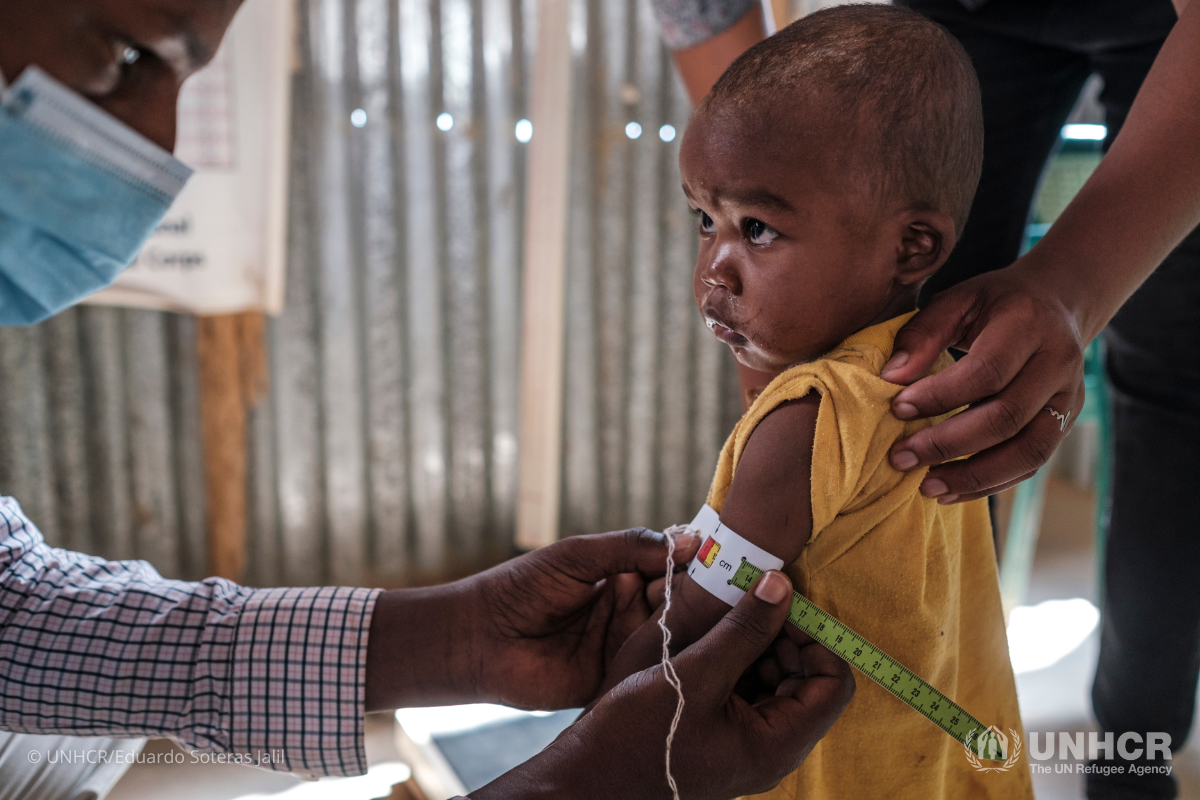
Those without adequate nutrition are at most risk during a famine, particularly vulnerable groups include refugees and displaced people. Among them, displaced children - especially those under 3 years - and pregnant and nursing women face the greatest risk. In Yemen alone, more than 2.25 million children under the age of five, including nearly 540,000 severely malnourished, and more than 1 million pregnant and lactating women were projected to suffer from acute malnutrition in the course of 2021.
Children with acute malnutrition are deprived of essential vitamins and minerals required for their proper growth, making them prone to disease, severe developmental delays and even death. In famine-like conditions, millions of children are pulled out of school and sent to work, begging on the streets and often eating just one meal a day.
Displaced women are also disproportionately impacted during famines as they often face barriers to access work opportunities and are at heightened risk of gender-based violence, forced labor and early marriage. Malnourished pregnant or nursing mothers are particularly vulnerable to deadly diseases and pregnancy complications.
What is UNHCR doing to help?
The UN Refugee Agency is working with partners to deliver cash-based assistance and lifesaving supplies - such as clean water, food and sanitation items - to vulnerable refugee and internally-displaced families struggling with food insecurity so that they can cover their most basic needs. Some of UNHCR’s activities in refugee camps also include nutritious interventions to ensure people have access to clean water and nutritious food - especially women, children and other vulnerable groups. UNHCR helps people suffering from malnutrition to access appropriate medical treatment and works with local authorities to identify livelihood opportunities that promote self-reliance. UNCHR is a partner of the global Food Security Cluster (FSC), established in 2011 to coordinate food security responses during major humanitarian crises.
How you can help people on the brink of famine…
Monthly giving is the most convenient, effective and efficient way you can help people struggling with hunger. Start making a lifesaving difference today. Please become USA for UNHCR’s newest monthly donor.
